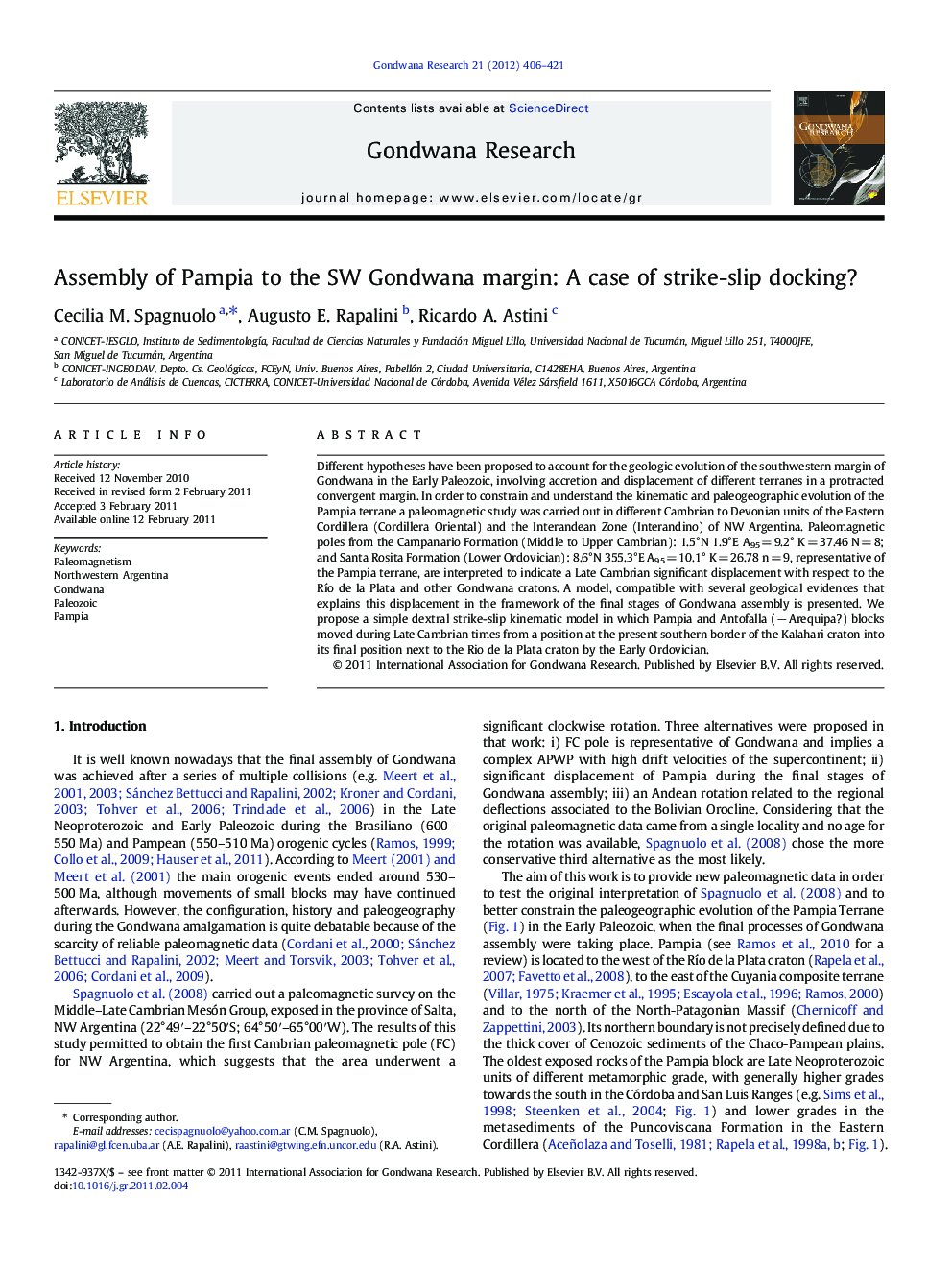| Article ID | Journal | Published Year | Pages | File Type |
|---|---|---|---|---|
| 4727601 | Gondwana Research | 2012 | 16 Pages |
Different hypotheses have been proposed to account for the geologic evolution of the southwestern margin of Gondwana in the Early Paleozoic, involving accretion and displacement of different terranes in a protracted convergent margin. In order to constrain and understand the kinematic and paleogeographic evolution of the Pampia terrane a paleomagnetic study was carried out in different Cambrian to Devonian units of the Eastern Cordillera (Cordillera Oriental) and the Interandean Zone (Interandino) of NW Argentina. Paleomagnetic poles from the Campanario Formation (Middle to Upper Cambrian): 1.5°N 1.9°E A95 = 9.2° K = 37.46 N = 8; and Santa Rosita Formation (Lower Ordovician): 8.6°N 355.3°E A95 = 10.1° K = 26.78 n = 9, representative of the Pampia terrane, are interpreted to indicate a Late Cambrian significant displacement with respect to the Río de la Plata and other Gondwana cratons. A model, compatible with several geological evidences that explains this displacement in the framework of the final stages of Gondwana assembly is presented. We propose a simple dextral strike-slip kinematic model in which Pampia and Antofalla (− Arequipa?) blocks moved during Late Cambrian times from a position at the present southern border of the Kalahari craton into its final position next to the Rio de la Plata craton by the Early Ordovician.
Graphical AbstractFigure optionsDownload full-size imageDownload as PowerPoint slideResearch Highlights► Paleopoles of Late Cambrian (FC2), Ordovician and Devonian units of NW Argentina. ► FC2 indicates significant rotation with respect to Gondwana. ► Strike-slip displacement of Pampia from S Kalahari up to W Rio de la Plata cratons.
